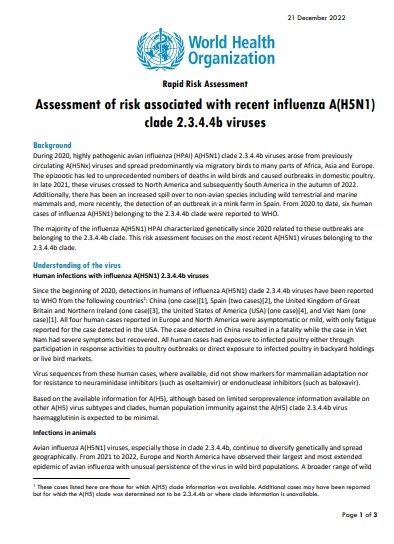Assessment of risk associated with recent influenza A(H5N1) clade 2.3.4.4b viruses
21 December 2022

Overview
During 2020, highly pathogenic avian influenza (HPAI) A(H5N1) clade 2.3.4.4b viruses arose from previously circulating A(H5Nx) viruses and spread predominantly via migratory birds to many parts of Africa, Asia and Europe. The epizootic has led to unprecedented numbers of deaths in wild birds and caused outbreaks in domestic poultry. In late 2021, these viruses crossed to North America and subsequently South America in the autumn of 2022. Additionally, there has been an increased spill over to non-avian species including wild terrestrial and marine mammals and, more recently, the detection of an outbreak in a mink farm in Spain. From 2020 to date, six human cases of influenza A(H5N1) belonging to the 2.3.4.4b clade were reported to WHO. The majority of the influenza A(H5N1) HPAI characterized genetically since 2020 related to these outbreaks are belonging to the 2.3.4.4b clade. This risk assessment focuses on the most recent A(H5N1) viruses belonging to the 2.3.4.4b clade.
